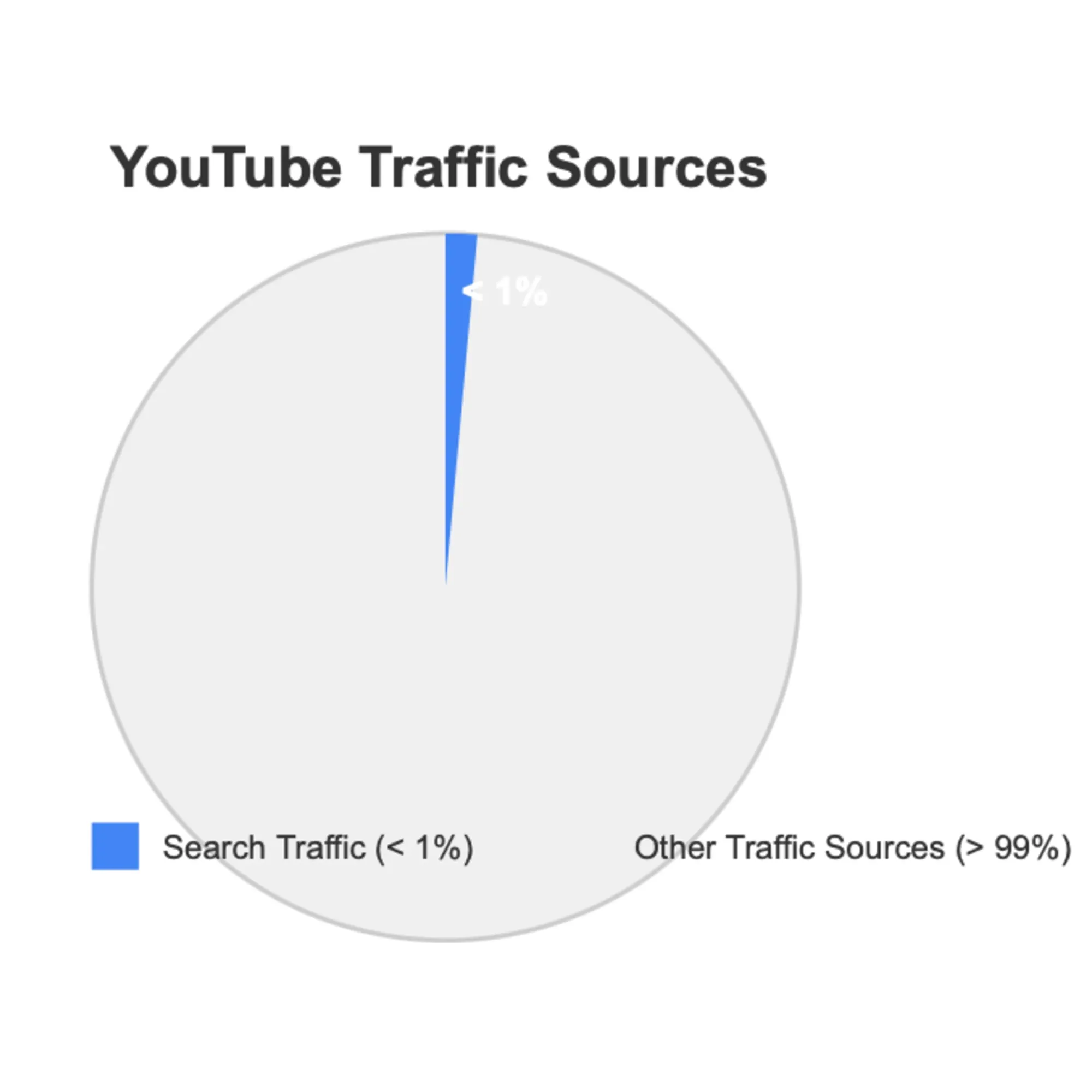YouTube's search traffic accounts for less than 1% of total views
New data reveals Google search results generate minimal YouTube views, challenging claims of preferential treatment.

In a federal court hearing on February 6, 2025, Google disclosed that search engine traffic accounts for less than 1% of total YouTube views, a statistic that challenges fundamental assumptions about the platform's growth mechanisms and market dominance.
The data emerged during an antitrust lawsuit filed by video platform Rumble in Oakland's federal courthouse, where Google's legal team presented quantitative evidence about YouTube's traffic sources. According to Attorney John Schmidtlein of Williams & Connolly, representing Google, "Roughly less than 1% of views on YouTube come from people who click on [search] links."
This percentage provides new insights into YouTube's traffic composition, indicating that direct platform visits, mobile apps, embedded videos, and social media sharing drive the vast majority of YouTube's engagement. The platform generated $50 billion in revenue last year, suggesting that search engine optimization plays a significantly smaller role in its business model than previously assumed.

The statistics emerged as part of Google's defense against Rumble's antitrust claims. Rumble, which reported 67 million monthly users in late 2024 according to SEC filings, alleges that Google unfairly promotes YouTube content in search results, even when users specifically search for Rumble's content.
Google's legal team argued that the minimal impact of search-driven traffic undermines claims of anti-competitive behavior. Attorney Schmidtlein emphasized the need for quantitative evidence in antitrust cases, stating in court, "I don't think there's any disagreement that in this case, you have to put some quantitative calculation around it. Otherwise, we're just waving at thin air."
The case, heard by U.S. District Judge Haywood S. Gilliam, an Obama appointee, comes at a critical time for Google. The tech company faces multiple antitrust challenges, including a November 2024 Justice Department argument that Google should divest properties like Chrome browser and Android operating systems to address monopoly concerns.
Rumble's legal team, led by Attorney Jack Stern of Cadwalader Wickersham & Taft, contested Google's interpretation, arguing that even a small percentage of traffic can significantly impact competitive dynamics. "Once a YouTube video is placed above other platforms on the search results, a rival cannot hope to compete on another Android system's home screen," Stern argued in court.
The case's implications extend beyond the immediate dispute between Google and Rumble. The traffic data provides unprecedented transparency into YouTube's user acquisition strategies and challenges conventional wisdom about search engine optimization's role in video platform success.
If Judge Gilliam does not rule in Google's favor on the summary judgment motion, the case is scheduled for trial in May 2025. The outcome could establish new precedents for how courts evaluate market power in the digital economy, particularly regarding the relationship between search engines and content platforms.
The lawsuit, filed in January 2021, survived Google's initial attempt at dismissal when Judge Gilliam ruled that Rumble had adequately pleaded its claims. The case continues in the Northern District of California at the Ron V. Dellums Federal Courthouse in Oakland.


